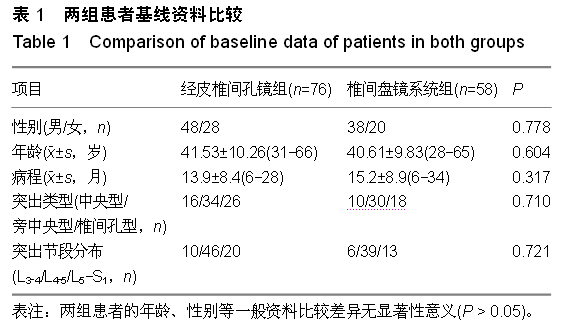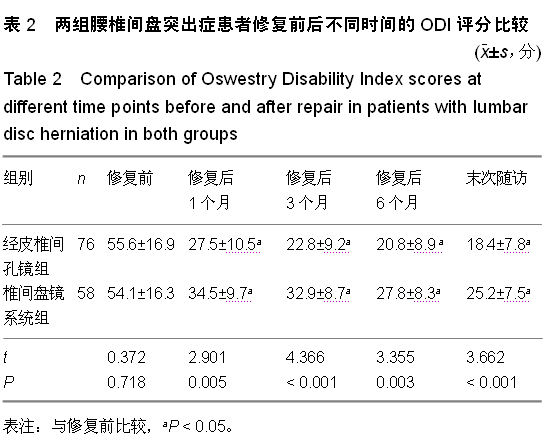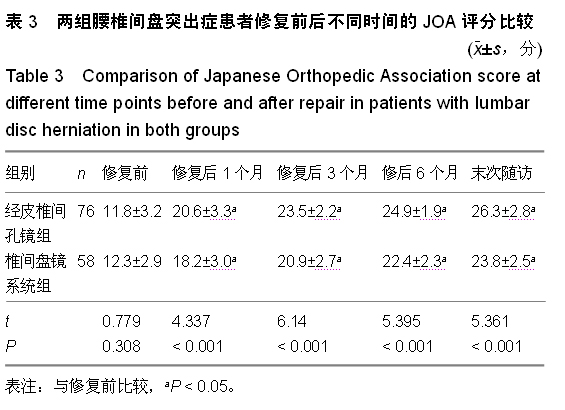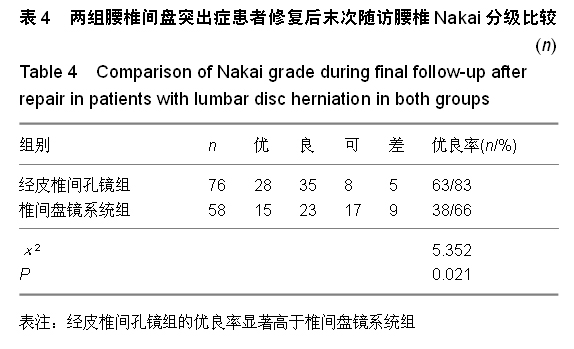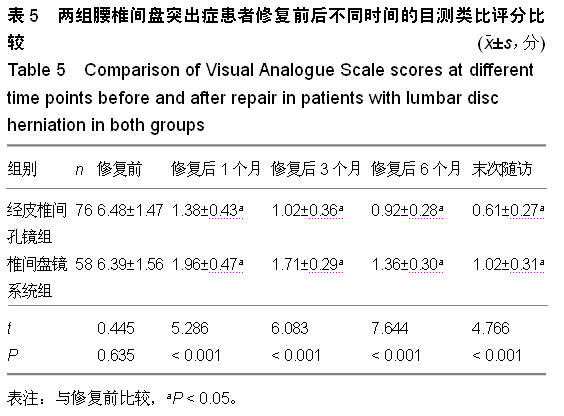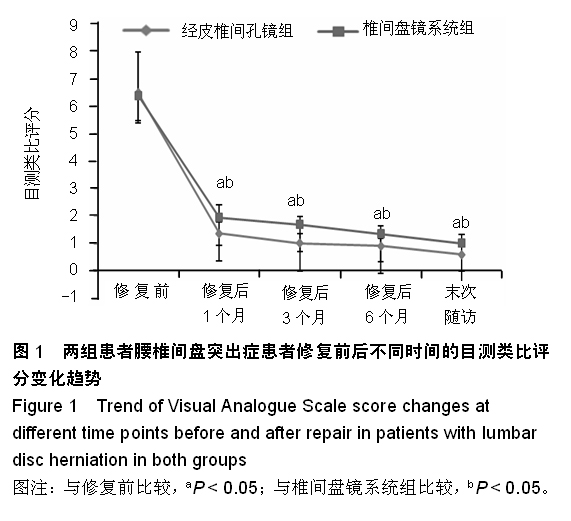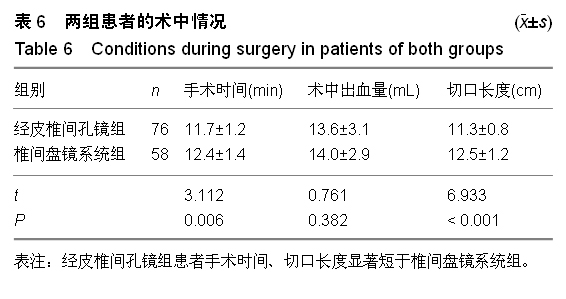中国组织工程研究 ›› 2015, Vol. 19 ›› Issue (35): 5641-5645.doi: 10.3969/j.issn.2095-4344.2015.35.013
• 脊柱植入物 spinal implant • 上一篇 下一篇
椎间孔镜条件下置入椎弓根钉治疗腰椎间盘突出症
陈广儒,卫建民
- 宝鸡市中医院骨科,陕西省宝鸡市 721000
Pedicle screw for lumbar disc herniation under transforaminal endoscopy
Chen Guang-ru, Wei Jian-min
- Department of Orthopedics, Baoji City Chinese Medicine Hospital, Baoji 721000, Shaanxi Province, China
摘要:
背景:腰椎间盘突出症是椎间盘发生退行性变化后,生物化学变化引起腰部疼痛、下肢放射性疼痛的临床综合征。临床常采用经皮椎间孔镜(TESSYS)与椎间盘镜系统治疗,但其疗效具有差异性。 目的:比较经皮椎间孔镜与椎间盘镜系统治疗腰椎间盘突出症的临床疗效。 方法:回顾性分析134例腰椎间盘突出症患者的治疗及随访资料,根据治疗方法分为经皮椎间孔镜组(76例)和椎间盘镜系统组58例,比较两组患者的术中情况、修复后不同时间的疼痛、腰椎功能变化情况。 结果与结论:①腰椎间盘突出症修复前两组患者的目测类比评分、Oswestry功能障碍指数评分比较差异不显著(P > 0.05);两组患者修复后第1,3,6个月及末次随访两项评分均显著的降低(P < 0.05);修复后各时间点经皮椎间孔镜组两项评分均显著的低于椎间盘镜系统组(P < 0.05)。②修复前两组患者的日本矫形外科学会评分比较差异不显著(P > 0.05);修复后第1,3,6个月及末次随访经皮椎间孔镜组患者的日本矫形外科学会评分显著高于椎间盘镜系统组(P < 0.05)。③末次随访经皮椎间孔镜组的优良率显著高于椎间盘镜系统组(P < 0.05)。④经皮椎间孔镜组患者的手术时间、切口长度显著的短于椎间盘镜系统组,两组术中出血量比较差异不显著(P > 0.05)。结果表明,经皮椎间孔镜治疗腰椎间盘突出症具有创伤小,修复后患者疼痛轻微,功能恢复良好的优点。
中国组织工程研究杂志出版内容重点:人工关节;骨植入物;脊柱;骨折;内固定;数字化骨科;组织工程
中图分类号:
